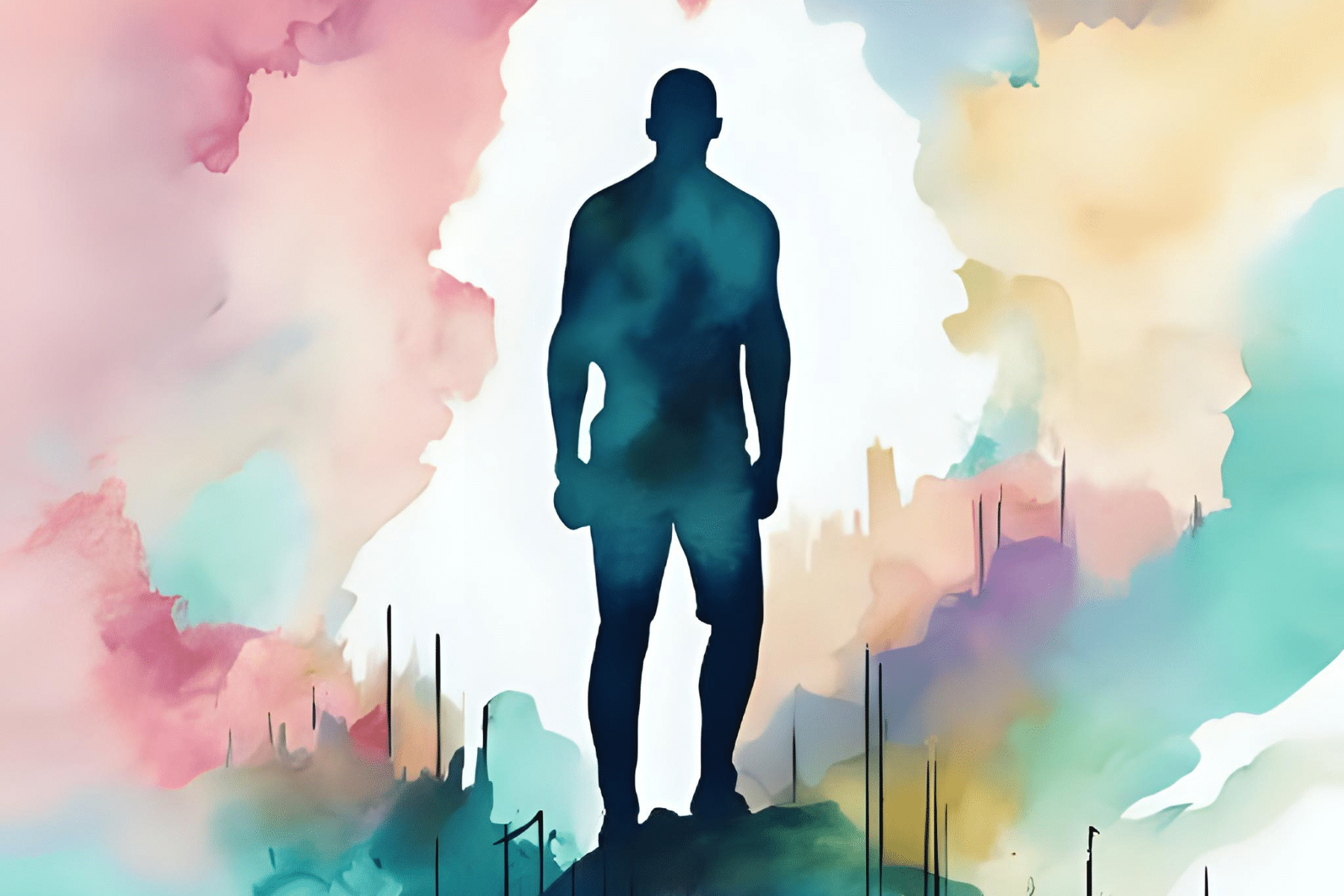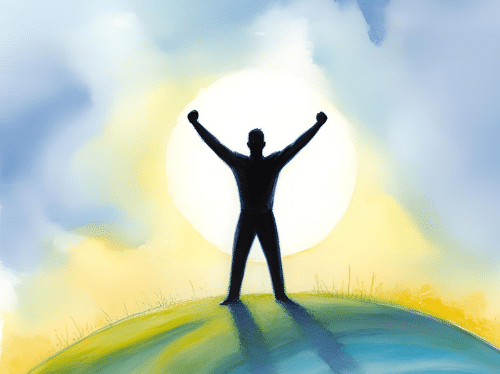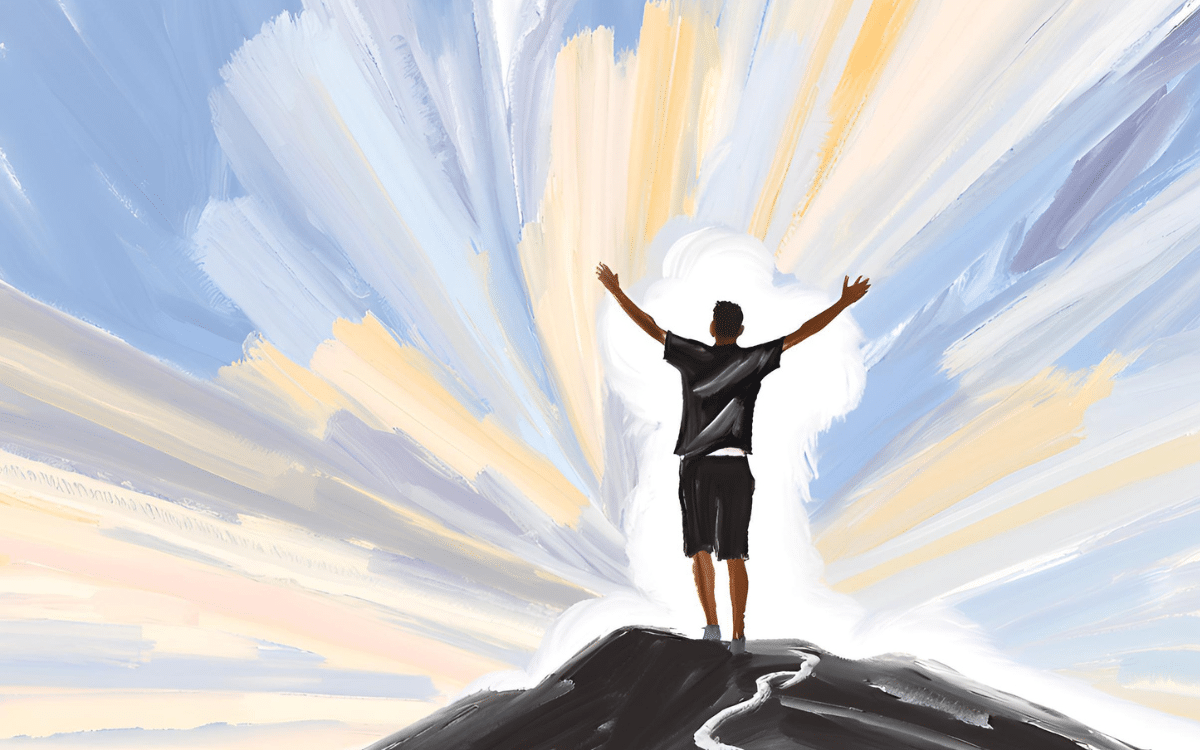We often hear how mental health disorders can change a life, but do we understand to what extent? Did you know that mental health challenges can lead to job loss, family loss, or even jail time? Mental health disorders — including bipolar disorder — can lead to all those things, and John can attest to it.
His story begins with past events of close family members — his father and father-in-law were both Holocaust survivors. These two individuals had genuinely been through one of the most devastating events someone could experience. John’s mother and grandmother battled acute episodes of depression, with a suspicion that his grandmother also suffered from bipolar disorder. His mother also developed symptoms of Parkinson’s disease at the age of 70.
With the family history of mental health challenges, John felt certain he inherited his issues. Genetics is one of the risk factors that contribute to anxiety, as well as brain chemistry, personality, and life events. Family history is also the most substantial risk factor for bipolar disorderr. John is also an Ashkenazi Jew, which has shown a history of genetic predisposition for bipolar disorder.
Mental Health Disorders & the Devastating Effects
As a young boy, John did not show signs of challenges with mental health — he was happy and social. As the years progressed though, the challenges of school and due dates got the better of him, and he began to develop anxiety and had difficulty sleeping. His parents encouraged him, but seeking professional help was not an option.
John’s sleep pattern became worse as he got older, and he began averaging four hours of sleep each night. Sleep medication helped him to rest, but left him tired the next morning. He became addicted. Eventually, the valium became ineffective, and the insomnia returned.
Despite the lack of sleep, John was a successful podiatrist who directed a residency program and performed surgery three to four times a week. However, when John turned 40, he had a 3- to 4-month manic episode followed by a period of depression. He was given a short course of mood stabilizers, but ultimately maintained on antidepressants and anti-anxiety medication.
Individuals with bipolar disorder can have dramatic mood swings characterized by episodes as either a:
- Manic episode: abnormally elevated, expansive, or irritable mood accompanied by increased energy or activity that substantially impairs functioning
- Hypomanic episode: similar to a manic episode, however, not severe enough to cause serious social or occupational problems
- Major depressive episode: persistent depressed mood, or loss of interest or pleasure
- Mixed state: includes symptoms of a manic episode and a major depressive episode
John’s Mental Health Decline
Over the next several years, John’s anxiety and bipolar symptoms increased. Symptoms of bipolar disorder may include:
- Sadness
- Feelings of worthlessness or guilt
- Loss of interest in previously enjoyable activities
- Fatigue or loss of energy
- Gaining or losing a significant amount of weight
- Complaining about pain
- Suicidal thoughts or plans
John became verbally abusive to his wife and began to lack tolerance for his more difficult patients. Despite his lack of patience, he remained successful as a foot and ankle surgeon for an orthopedic group. During this time, he began to develop hand tremors, early symptoms of Parkinson’s disease, cataracts, and he needed knee replacement surgery. His spiraling physical issues caused John to slip into a severe depression.
With new issues meant a new doctor and new prescriptions. New medications allowed him to get his depression under control. However, the orthopedic group released him, sending him spiraling into a manic state. “At this point in my life, I became out of control,” John recalls.
John’s mental health conditions took control of his life. Although he had no control over his extreme shifts in mood, it became too much for his family — they had reached their breaking point. His wife had him Baker Acted, which allowed for an involuntary examination of his mental health. While this was meant to help John, it sent him further down a destructive path. He blamed his wife for his issues and domestically assaulted her. She fought back, survived the attack, and John was arrested and incarcerated for eight months. It was during his time in jail that led John to find the support that would turn his life around — Lifeskills South Florida.
Helping Individuals with Bipolar Disorder Find Stability & Hope
John said, “I knew during that time, it wasn’t me. It was the depression and the bipolar disorder. I knew I needed help, but instead, I took it out on my family — and I paid the price for it. Lifeskills helped me turn my life around.”
Dr. Daniel Bober, Lifeskills Medical Director, came to the jail to see John. After several conversations, it was determined that John did not have a violent episode — but a manic bipolar episode. Further, the medication prescribed to treat Parkinson’s disease may have exacerbated his mania.
Comprehensive Treatment for Bipolar Disorder at Lifeskills
Now knowing John’s diagonoses, Dr. Bober recommended a residential treatment program. At Lifeskills, a combination of therapy and medication is used to treat bipolar disorder. Cognitive behavioral therapy (CBT) is often used as a treatment for bipolar disorder. This solution-focused, evidence-based treatment approach emphasizes changing behavior through applying specific skills. CBT focuses on the relationship between cognition, emotions, and behavior and how changing the mental evaluation of a situation can change the behavioral reaction.
John spent three months in the Lifeskills residential program, and another three months at Osceola Village — transitional living for clients who have stepped down from the residential level of care.
John recalls his feeling when he arrived at Lifeskills, “I left prison shackled and placed in a van. It was dark, and I was frightened. When they opened the door, I saw Lifeskills. The townhomes were full of color, the grass was green, and people talked to me like I was a human being. They talked to me like I was important and I mattered.”
John was in a healing environment that focused on his presenting problem as well as the underlying disorder that was contributing to it. Primary therapist, Ostin Celestin, made a significant impact on John, as he learned that he was in a safe place and could share his feelings. John learned that his feelings are acceptable and he could move forward to a life of recovery from his disorder. Using a comprehensive approach, John’s treatment team addressed the challenges he was facing daily, and empowered him to sustain long-term recovery.
John also attributes his success at Lifeskills to his roommate, “My roommate was a pilot, and I remember thinking, this guy has an important job and a mental health condition. If he can do this, then so can I. We had great conversations, and I remember feeling so fortunate to be rooming with him,” he said.
Stepping Back Into Daily Life with Confidence
John returned home after treatment, and today he is taking one day at a time. Unfortunately, he has learned the reality of life with a mental health disorder from the loss of his job, his family, his freedom, and his friends. “I have been home for almost a year. I have led an impressive life and done great things for people. When you have bipolar disorder, people don’t understand — some friends no longer come around. I have family members that no longer speak to me or my wife. It hurts, but I try to understand. I don’t look in the past — it could have been worse. Look forward and make a life for yourself. Slowly I am finding people who accept me.”
John not only took control of his life, but also left Lifeskills with valuable takeaways that he incorporates into his daily life. He goes to the gym almost every day, and avoids alcohol, drugs, and caffeine. Support groups are a regular part of his routine, and he takes computer courses at the Jewish Federation of South Florida. John continues his recovery journey by sharing his story, facilitating discussions, and mentoring others who struggle with similar issues. He continues to look ahead rather than focusing on the past. His dedication to his family is stronger than ever, he loves his wife more each day, and values how far he has come.
________________________________
“At Lifeskills South Florida, I learned how to deal with my disorder and to live my life after treatment. Slowly but surely, I’m doing just that. When I arrived at Lifeskills, I was scared, but I knew they were going to take care of me — and they did.”
________________________________




